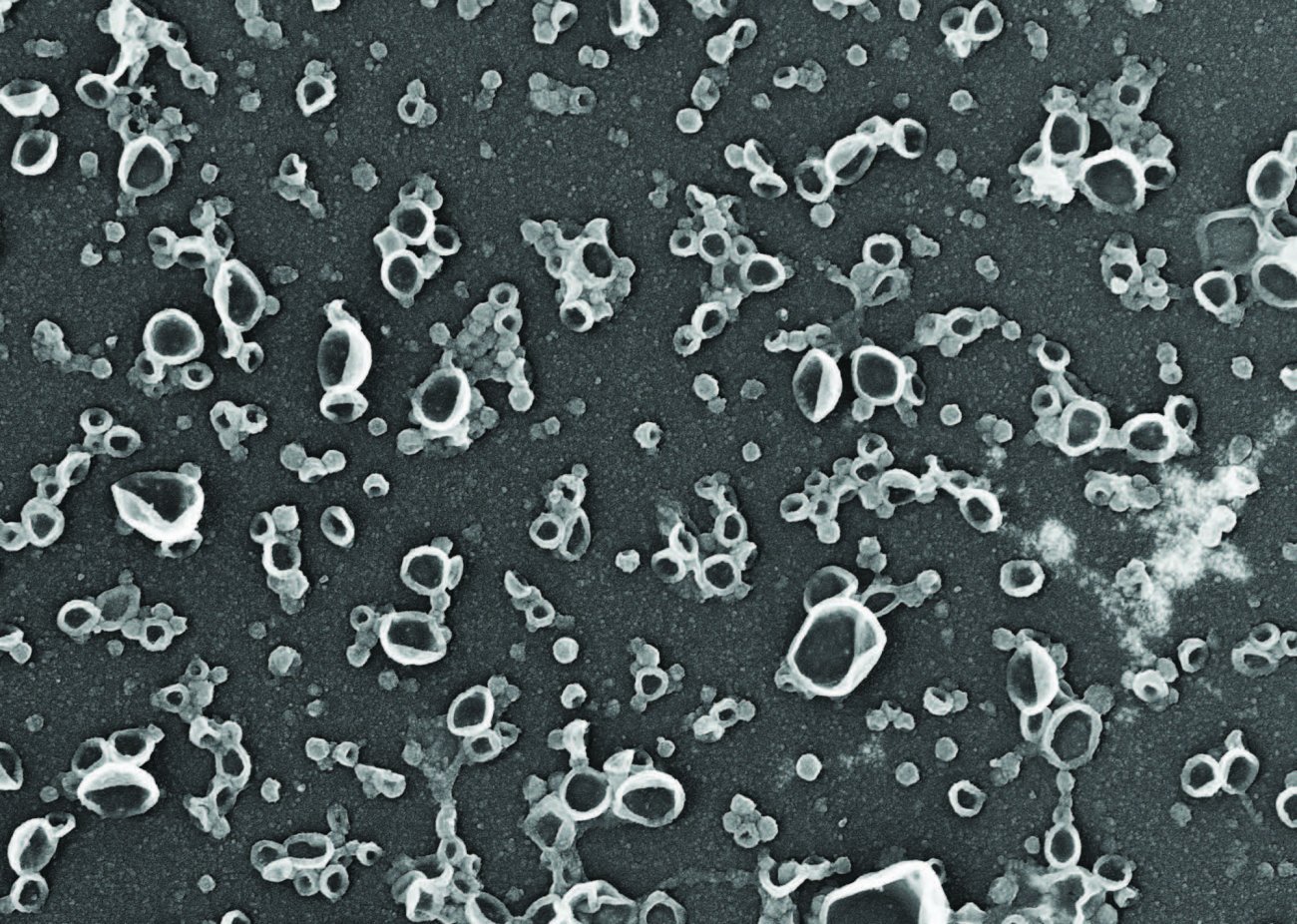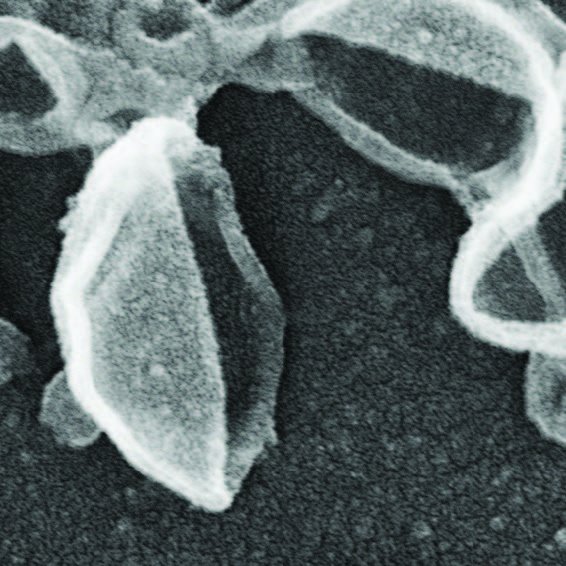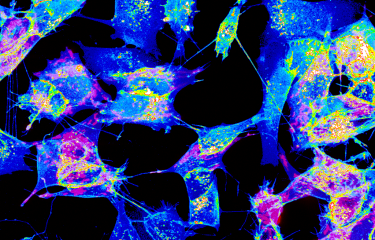Scientists have reproduced the mechanism of autophagy, stimulated by intermittent fasting. This process enables the breakdown of cellular waste, which has health benefits. But the process naturally becomes less effective as the body ages. Autophagy is a possible avenue for research to "cleanse" neurons of their aggregates of harmful proteins in diseases such as Alzheimer's or Parkinson's. Elucidating the mechanism of autophagy raises hopes that it might be possible to stimulate the process of autophagy and perhaps one day lead to a cure for neurodegenerative diseases.
Intermittent fasting has become a popular practice in recent years. It is known to have beneficial health effects – several studies1, 2, 3 have shown that leaving longer gaps between meals reduces the risk of heart attack, stroke and cancer.
Intermittent fasting could even extend our lifespan. These positive effects are related to the biochemical processes induced in cells when we deprive ourselves of food. One such process, known as autophagy, is a key recycling system induced in all the body's cells when we are hungry.
Autophagy: cellular cleansing reproduced in the laboratory
The main function of autophagy is to break down damaged or unwanted cellular components. During autophagy, a membrane sac forms. It functions like a trash bag and collects cellular waste. The method used by cells to produce these "trash bags" had always remained a mystery, despite considerable research.
But the Membrane Biochemistry and Transport team at the Institut Pasteur has unlocked the secret.4 The scientists discovered that hungry cells produce a container composed of proteins, which forms a cup to stabilize the membrane.


Cell membranes are flexible barriers that can separate a cell's compartments. Membranes are flexible and can take on any form. In the process of autophagy, cellular "trash bags" are shaped like cups, which enables them to collect and contain waste. The formation of these membrane cups requires protein scaffolding, which assembles at the membrane surface. "We identified the elements in the scaffolding and elucidated the way in which they assemble to form cellular trash bags," explains Jagan Mohan, a scientist in the team that made this important discovery. "To understand the molecular mechanism behind the process, we produced the components in the cellular trash can and then assembled the scaffolding step by step on artificial membranes. This enabled us to reconstruct cellular trash bags in test tubes and to reveal the structure and function of the protein scaffolding components that form the trash can."
A step towards a cure for age-related diseases?
"Our discovery paves the way for the identification of drugs that activate autophagy and induce the formation of cellular trash bags," explains Thomas Wollert, who leads the research team. "We know that autophagy is a serious avenue to explore as a way of breaking down the protein aggregates observed around neurons in neurodegenerative diseases" – and thereby slowing down the aging process. "Our hope is that these drugs could be used to treat patients with Alzheimer's or Parkinson's disease." The drugs would also be useful in preventing the development of diabetes in high-risk patients.
Fasting: watch out for fad diets and extreme trends!
In their study, the scientists refer to 16/8 intermittent fasting, which is one way of limiting food intake. The idea is to fast for 16 hours every day and only eat during an 8-hour window. But the diet only works if it is sustained permanently, so it is not recommended for certain people. Medical advice should always be sought.
There are also more extreme examples of intermittent fasting, which are risky and should be avoided. These include the 5:2 diet (fasting for two days a week) or "Eat Stop Eat" (fasting for 24 hours once or twice a week). There are health risks5, 6 associated with these extreme practices, which can lead to nutritional deficiencies or eating disorders. They can also be associated with cult-like behavior. If you want to start intermittent fasting, you should always ask your doctor for advice.
Sources
- Dong, TA et al. Intermittent Fasting: A Heart Healthy Dietary Pattern? Am J Med. DOI: 10.1016/j.amjmed.2020.03.030. Epub 2020 Apr 21
- Longo, V.D., & Mattson, M.P. (2014). “Fasting : molecular mechanisms and clinical applications.” Cell Metabolism. Fasting: Molecular Mechanisms and Clinical Applications - ScienceDirect
- Johnstone, A.(2015).“Fasting for weight loss : an effective strategy or latest dieting trend?” Nature, International Journal of Obesity
- ATG16L1 induces the formation of phagophore-like membrane cups | Nature Structural & Molecular Biology
- Dong, H et al. Neuroprotective effects of intermittent fasting in the aging brain. Ann Nutr Metab. 2024 Apr 17
- Vasim, I et al. Intermittent Fasting and Metabolic Health. Nutrients. 2022 Jan 31;14(3):631. DOI: 10.3390/nu14030631









